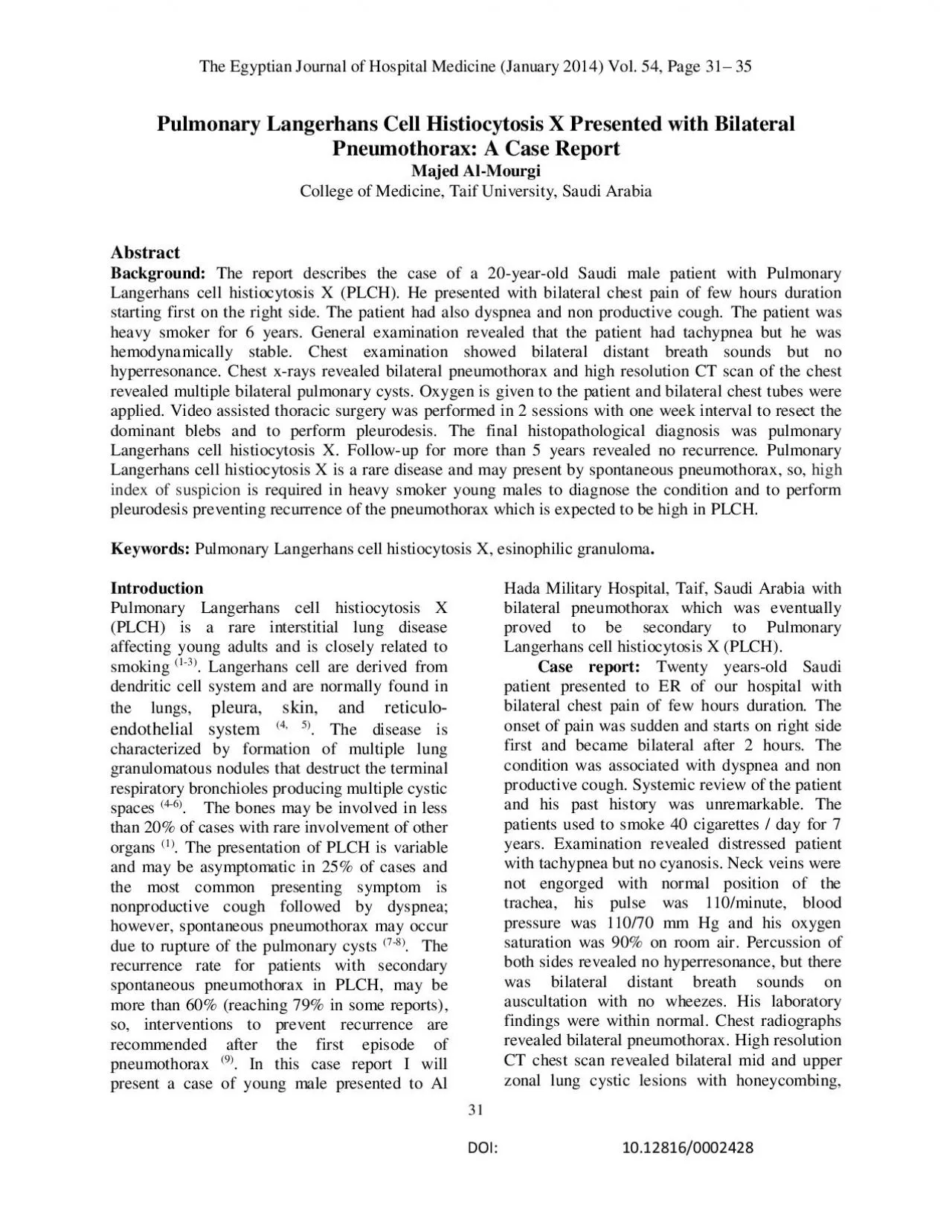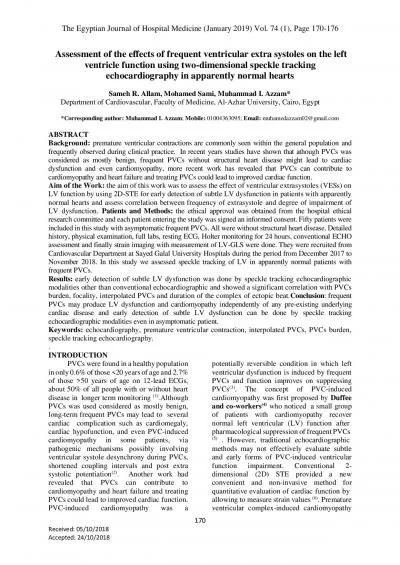PDF-The Egyptian Journal of Hospital Medicine January 2014 Vol 54 Page
Author : eliza | Published Date : 2022-10-26
31 35 31 DOI 10128160002428 Pulmonary Langerhans Cell Hist i ocytosis X Presented with Bilateral Pneumothorax A Case Report Majed A l Mourgi College of Medicine
Presentation Embed Code
Download Presentation
Download Presentation The PPT/PDF document "The Egyptian Journal of Hospital Medicin..." is the property of its rightful owner. Permission is granted to download and print the materials on this website for personal, non-commercial use only, and to display it on your personal computer provided you do not modify the materials and that you retain all copyright notices contained in the materials. By downloading content from our website, you accept the terms of this agreement.
The Egyptian Journal of Hospital Medicine January 2014 Vol 54 Page: Transcript
Download Rules Of Document
"The Egyptian Journal of Hospital Medicine January 2014 Vol 54 Page"The content belongs to its owner. You may download and print it for personal use, without modification, and keep all copyright notices. By downloading, you agree to these terms.
Related Documents














